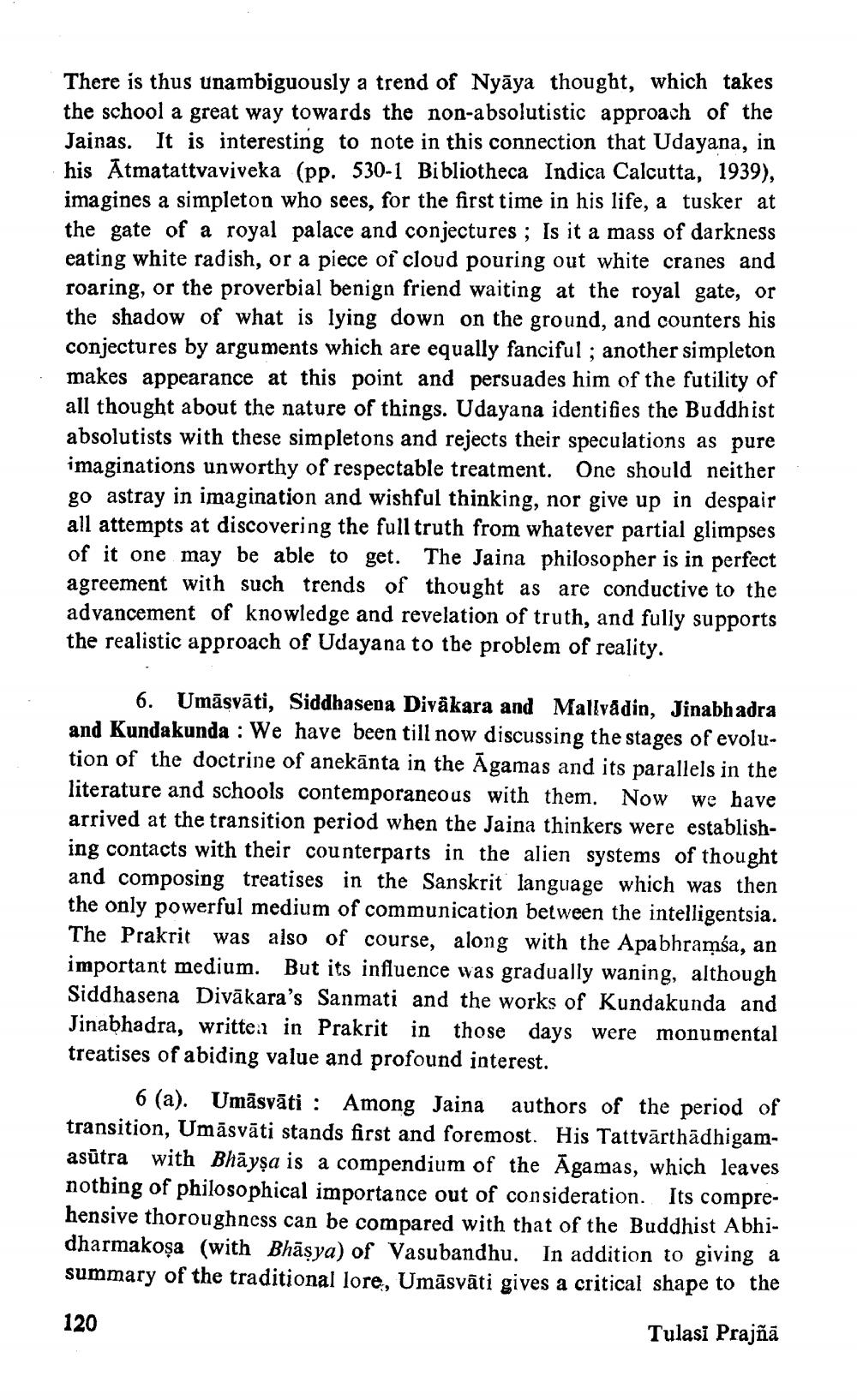________________
There is thus unambiguously a trend of Nyāya thought, which takes the school a great way towards the non-absolutistic approach of the Jainas. It is interesting to note in this connection that Udayana, in his Atmatattvaviveka (pp. 530-1 Bibliotheca Indica Calcutta, 1939), imagines a simpleton who sees, for the first time in his life, a tusker at the gate of a royal palace and conjectures; Is it a mass of darkness eating white radish, or a piece of cloud pouring out white cranes and roaring, or the proverbial benign friend waiting at the royal gate, or the shadow of what is lying down on the ground, and counters his conjectures by arguments which are equally fanciful ; another simpleton makes appearance at this point and persuades him of the futility of all thought about the nature of things. Udayana identifies the Buddhist absolutists with these simpletons and rejects their speculations as pure imaginations unworthy of respectable treatment. One should neither go astray in imagination and wishful thinking, nor give up in despair all attempts at discovering the full truth from whatever partial glimpses of it one may be able to get. The Jaina philosopher is in perfect agreement with such trends of thought as are conductive to the advancement of knowledge and revelation of truth, and fully supports the realistic approach of Udayana to the problem of reality.
6. Umāsvāti, Siddhasena Diväkara and Mallvädin, Jinabhadra and Kundakunda : We have been till now discussing the stages of evolution of the doctrine of anekānta in the Āgamas and its parallels in the literature and schools contemporaneous with them. Now we have arrived at the transition period when the Jaina thinkers were establishing contacts with their counterparts in the alien systems of thought and composing treatises in the Sanskrit language which was then the only powerful medium of communication between the intelligentsia. The Prakrit was also of course, along with the Apabhramśa, an important medium. But its influence was gradually waning, although Siddhasena Divākara's Sanmati and the works of Kundakunda and Jinabhadra, writtea in Prakrit in those days were monumental treatises of abiding value and profound interest.
6 (a). Umāsvāti : Among Jaina authors of the period of transition, Umāsvāti stands first and foremost. His Tattvārthādhigamasūtra with Bhāyşa is a compendium of the Āgamas, which leaves nothing of philosophical importance out of consideration. Its comprehensive thoroughness can be compared with that of the Buddhist Abhidharmakoşa (with Bhāsya) of Vasubandhu. In addition to giving a summary of the traditional lore, Umāsvāti gives a critical shape to the
120
Tulasi Prajñā




